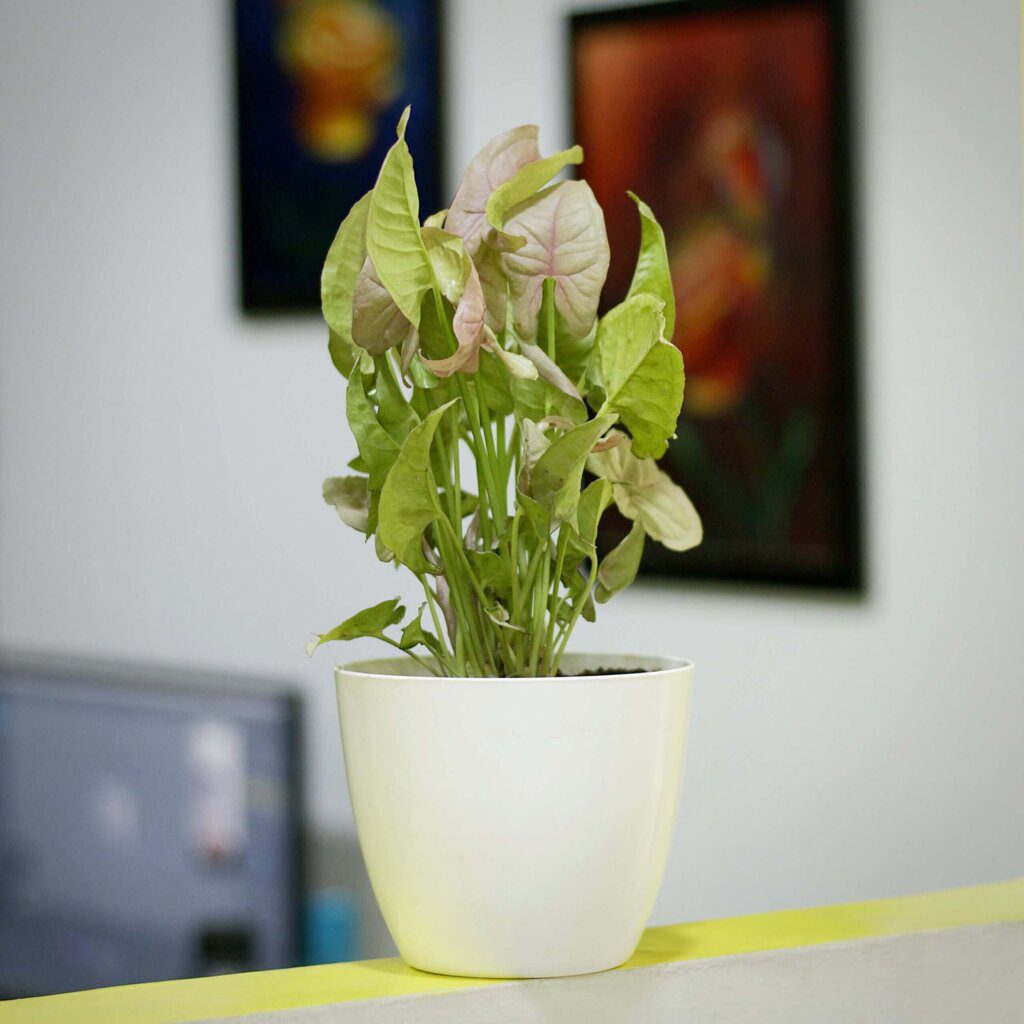

Syngonium Pink Plant - Syngonium Podophyllum ‘Neon Robusta
If you want a plant that’s beautiful, easy to maintain, and hard to kill, a Syngonium Pink Plant Neon will be an excellent choice. With their pink leaves and aesthetic vibes, these plants are a sight to see, which is why they’re popular as ornamental houseplants. Growers hang them in baskets or let them climb up sturdy support. Either way, their leaves give a beautiful color to any interior and clean your surrounding air.
Origin: Syngonium Pink Plant hails from Brazil, Bolivia, and Ecuador all the way up to Mexico. Syngonium Pink Plant have become highly popular with indoor plant enthusiasts throughout the US.


Light & Temperature
As a rainforest vine, the Pink Arrowhead Plant favours bright indirect sunlight. That being said, it’s pretty forgiving on the lower end of light conditions too. Though – as with all variegated plants – you can probably expect to see some loss of color in full shade. Want to keep those pink leaves looking their best? Then give them as much brightness as you can.Being a tropical and subtropical species, Syngonium Podophyllum ‘Neon Robusta’ is quite sensitive to temperature. It’s important to maintain a room temperature above 10°C (50°F) and avoid areas with cold drafts or wide temperature fluctuations.
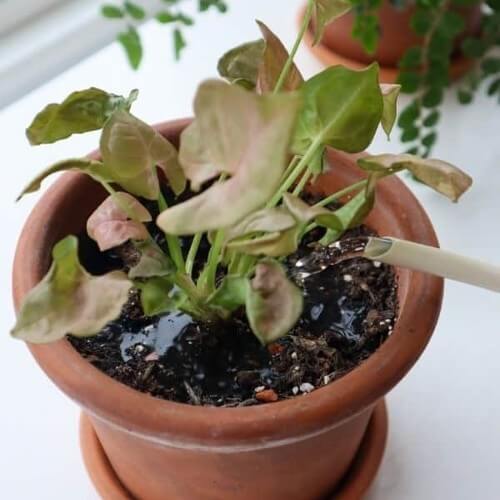

Watering
The tropical nature of the Pink Syngonium means it likes to be evenly moist, so it’s going to appreciate regular water. It’ll do fine if allowed to dry out a little between waterings, but if you see it drooping then it’s getting too thirsty. Just make sure it’s able to drain properly, otherwise you risk root rot with a constantly saturated substrate. When growing as a houseplant, pots with drainage holes are the easiest way to guarantee you’re not waterlogging your plants.


Fertilization
This plant is not a heavy feeder. Thus, a light liquid formula once a month or a slow-release fertilizer will do the job. The ideal fertilizer will be one with an NPK ratio of 20:20:20. Do not overfeed the plant or fertilize it in the colder months as this could lead to scorched leaves, or in other words, fertilizer burn.
Plant Care Tips
- Cleaning & Pruning– clean your plant using contemporary cleaning methods like dusting and wiping using a soft damp cloth. Pruning is essential for avoiding the ugly flop effect and keeping the plant organized. To prune, use a sharp knife or pair of scissors to cut off unwanted leaves and overgrowing stems. Safeguard your eyes from the milky substance produced by the plant.
- Mealybugs or scale may hide under stems and leaves. To remove the pests, use a spray bottle of water or wipe the insects off gently with a bit of rubbing alcohol on a paper towel or cotton swab. Repeated applications will be necessary to remove the pests’ offspring. If the plant is too heavily infested, it may be better to take a clean cutting from it and start anew.
- Plant drooping & leaves turning brown are signs of a thirsty plant in need of more frequent or deeper waterings. Dry and parched soil causes the plant to lose its natural stiffness and droop.
- Leaves turning green indicates that the plant is getting too much fertilizer.
- Leaves curling can be due to inadequate light exposure. Less light causes less photosynthesis. This produces less energy to sustain the upright posture of the leaves.
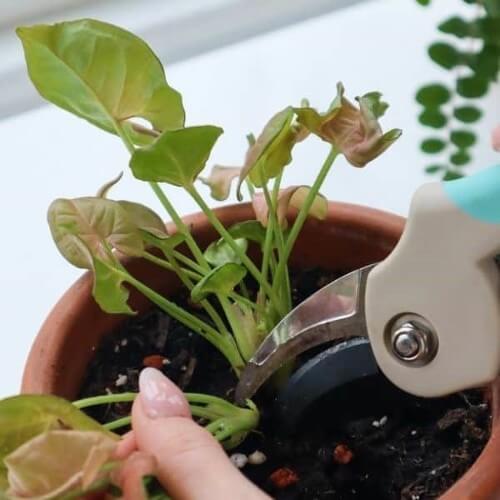

Propagating Syngonium Pink Plant
The best method of propagating arrowhead vine is through root stem cuttings in water. It is advisable to cut a section of the plant close to the root. Ensure the section cut has about 3 to 4 leaves on it. Put the part cut in a jar full of water and wait for some days for the roots to start appearing. Bring onboard a small pot and mist the plant. Remember to place the pot in a region with medium to bright indirect light.
Repotting Syngonium Pink Plants
The majority of the Syngonium White Butterfly’s growth happens around the stems and leaves compared to the roots. For that reason, small pots tend to go well with the plant. However, if you notice slowed growth or the frequency of watering increases, it is noble to repot the plant into a bigger pot. Repotting involves using a coffee filter to cover drainage holes in the new pot, adding a layer of potting mix in the new container, and uprooting the plant. Loosen its roots, plant it in the new pot, and water adequately. Allow the soil to drain and take the plant to its designated area.




Our Favourable Aspects
Potting Mixture: It’s a mixture of appropriate amounts of soil, cocopeat & organic vermicompost. Provides best environment to the plant’s roots. It also contains slow-release Fertilizer which gives nutrients to the plants every time it is watered for 6 months.
· Packaging: Plant is secured in a good quality cardboard packaging. Inner Box holds the potted plant in place so that any movement during transit does not affect the plant. Outer box has slits which allow the plant to breathe freely during transit.


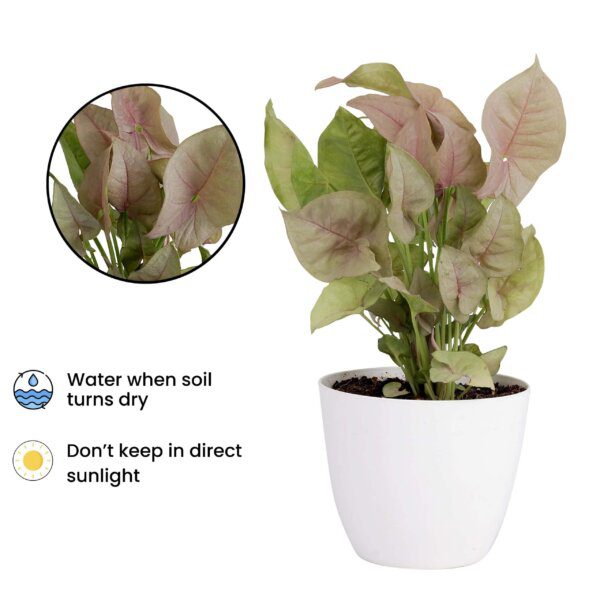
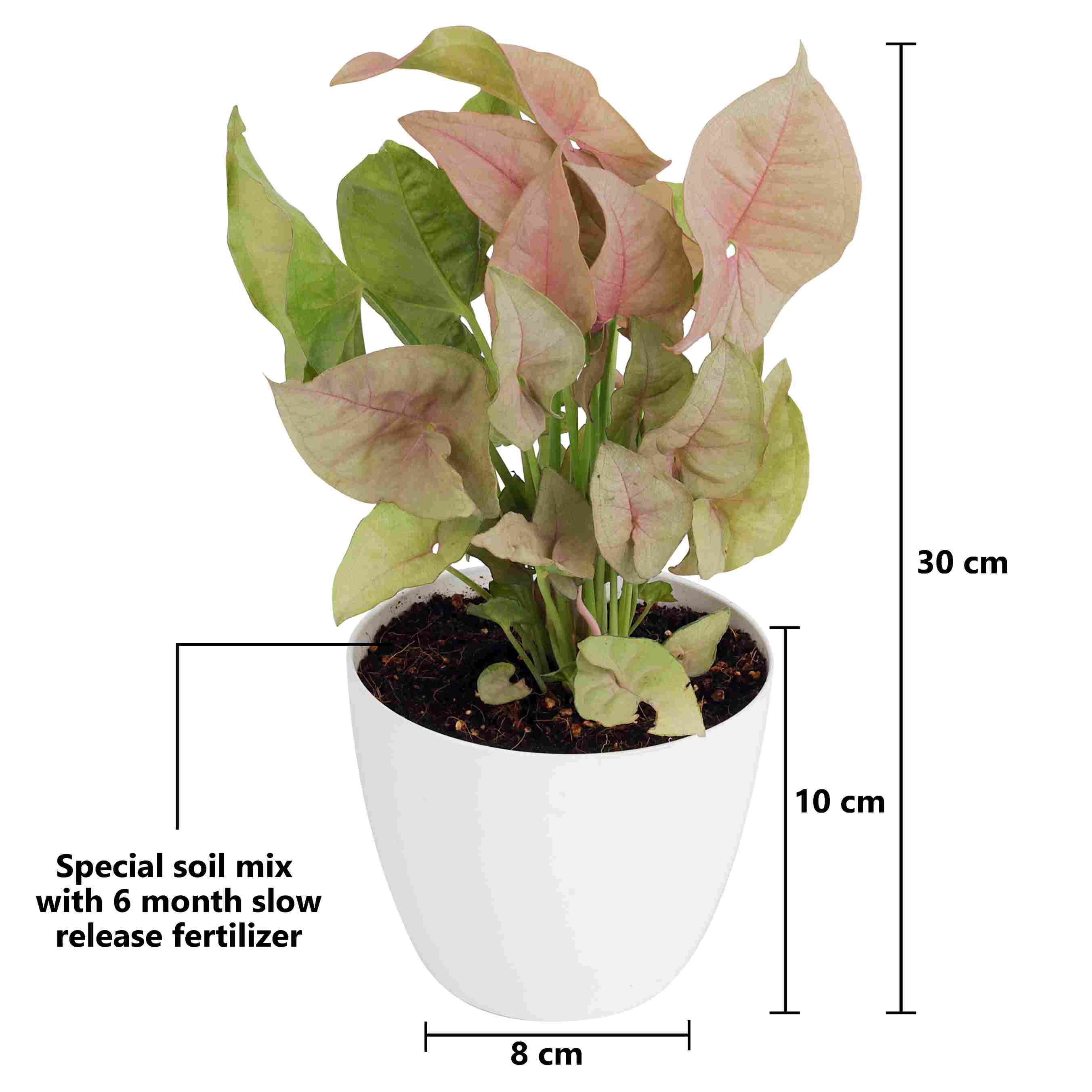


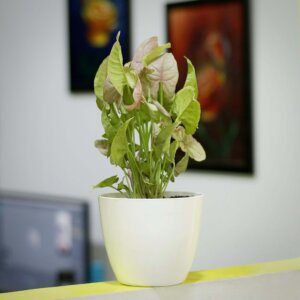

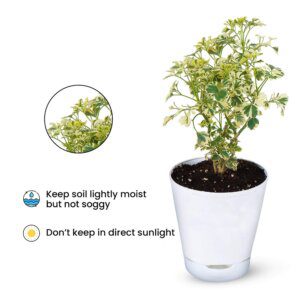

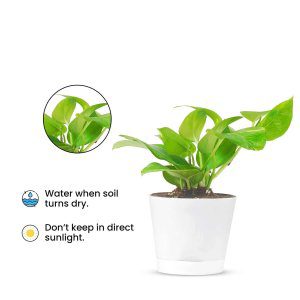

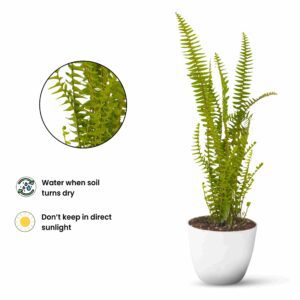
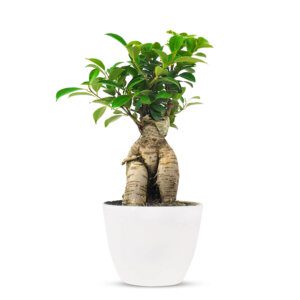
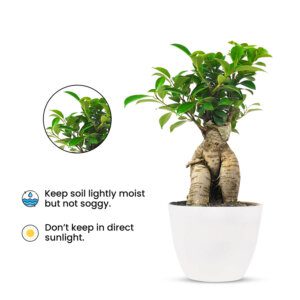
Reviews
There are no reviews yet.